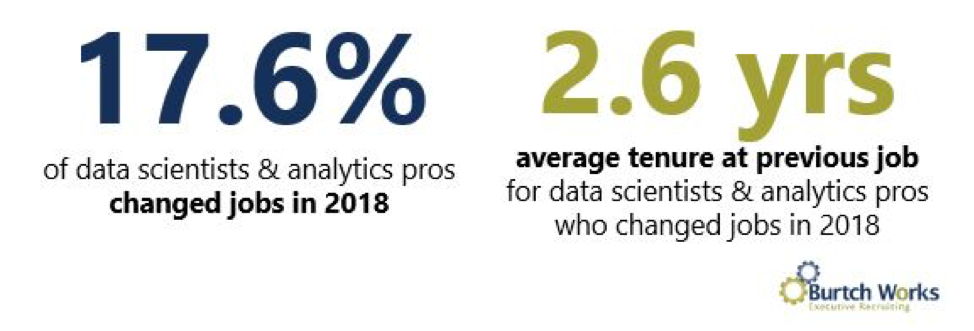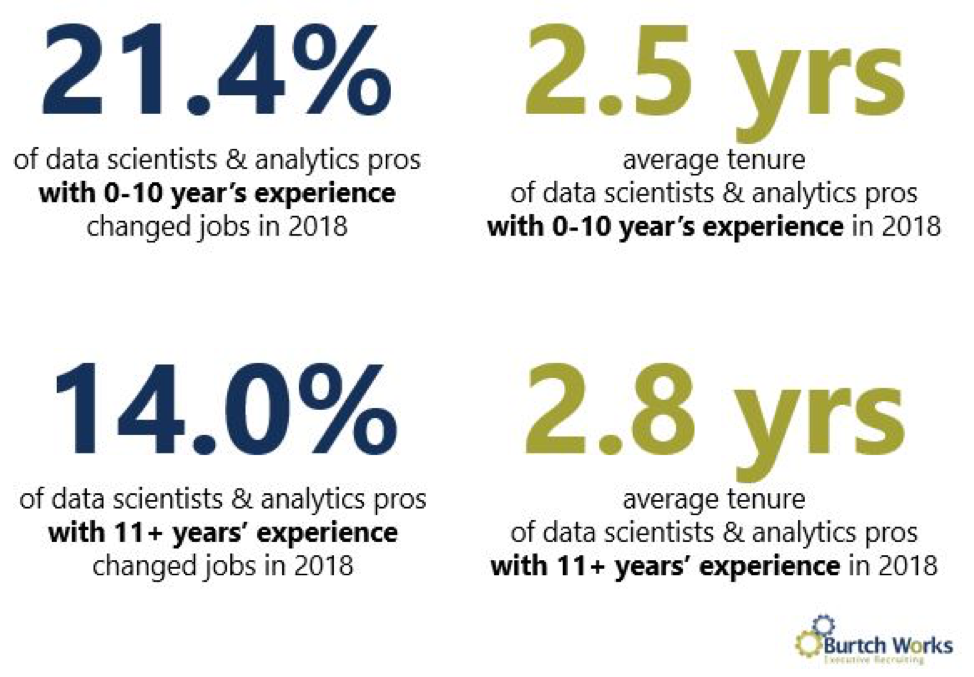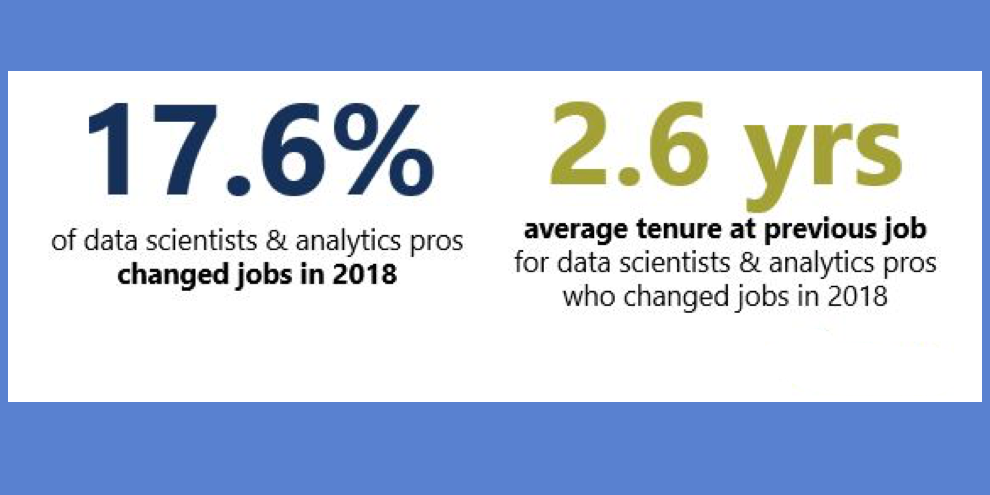Editor’s note: Linda Burtch is managing director at Burtch Works, a staffing and recruiting firm based in Evanston, Ill. This is an edited version of a post that originally appeared under the title, “How long do data scientists and analytics pros stay at their jobs?”
The results of our recent quantitative hiring flash survey show that many teams are looking to hire data scientists and analytics professionals, but we’re always curious to look at other measures of market activity!
While employers may look to these numbers to evaluate recruiting and retention strategy for data scientists and analytics professionals, it can also be beneficial if you’re, say, considering a career move (or proactively considering your career strategy) and wondering where you stand in regards to the industry average tenure.
Average tenure and job change percentages
To gauge the activity of the hiring market for data scientists and analytics professionals, we looked at a sample of hundreds of quantitative professionals in our network to determine:
- How many changed jobs in 2018?
- And among those who had changed jobs, how long had they stayed in their previous position?
For this research we focused on quantitative professionals who had actually changed companies and did not include those who had received a promotion or otherwise changed positions within the same company.

Our research found that 17.6 percent of data scientists and analytics professionals changed jobs in 2018. For those who changed jobs, their average tenure at their previous position was 2.6 years.
How job change varies based on work experience
As one might imagine, professionals who are earlier in their careers tend to change jobs more frequently than those with more experience. To illustrate this, we separated the sample by years of quantitative work experience and found that 21.4 percent of data scientists and analytics professionals with 0-10 years of experience changed jobs in 2018 and their average tenure was 2.6 years, compared to only 14 percent of those with 11+ years of experience, whose tenure was 2.8 years.

While we were a bit surprised to see that the average tenure for quantitative professionals with more experience was still relatively close to the average tenure for professionals early in their careers, this might be because there are more quantitative leadership opportunities than ever before as more firms and industries look to embrace predictive analytics capabilities.
Implications
While last year’s salary reports showed that salary changes from 2017 to 2018 were rather muted, this year we’re predicting a more noticeable bump in compensation, and an active market seems to support this prediction.
Despite the fact that more professionals are entering the data science and analytics fields, employers looking to hire senior-level leaders will still be targeting a much smaller pool of talent, so be deliberate in your approach to recruiting. Putting extra thought into writing an enticing job description helps you make a strong first impression.
